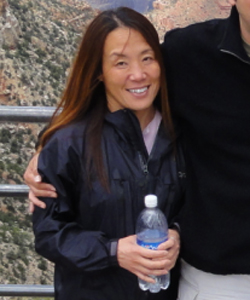As a little end-of-year celebration, we’re posting up an essay by editor in chief Kai Ma, which originally ran in our 20th Anniversary Issue (April 2010).
Here’s to 20 years (and hopefully more)!
In 1990, the year KoreAm debuted, anti-apartheid icon Nelson Mandela, while holding his wife’s hand, was released from a South African prison after 27 years behind bars. Later that year, the two Germanys would reunify. The Hubble Space Telescope was launched into space as U.S. legislators scrambled to prepare the Americans with Disabilities Act, signed into law by President George H. W. Bush that summer. Then in October—remember?—his nationally televised speech threatening to force the removal of Iraqi soldiers from Kuwait.
Surely, these zeitgeist-changing events didn’t fill our first pages (we’re a Korean American rag, after all), but also, because KoreAm grew from a desire to cover stories that weren’t found in the mainstream press. But more than just a journalistic vehicle, this new monthly was designed and devised to shine a light on our community—one that, in 1990, felt amorphous and for some, absent.
Around this time, Asian American ethnic press was experiencing a renaissance of sorts—A Magazine, Giant Robot and Yolk became prominent forums in the 1990s; AsianWeek was already more than 10 years old. It was a hopeful time, during which publications such as ours were by no means financially thriving, but nonetheless, alive. It was also a traumatic time, particularly for Korean Americans in Los Angeles, when in 1992, Korean-run businesses were targeted for violence and destruction during what’s known as this nation’s first multiethnic riot. We quickly recognized that KoreAm could do more than print press releases and calendar events. It could be a powerful voice for our English-speaking generations.
So when, in 2007, our nation confronted another difficult chapter, the Virginia Tech massacre, we had a place and space to cover the events surrounding this tragedy on our own terms. This past decade, our covers also highlighted what was beginning to feel like an apex for all things Korean. The Pinkberry phenomenon against the backdrop of the North Korean nuclear crisis, the globalization of South Korean pop culture, and then of course, the people: Michelle Wie, Far East Movement, John Cho, David Chang, Michelle Rhee. And when a Korean-speaking couple crashed onto an island on ABC primetime, it was as if, as a friend once put it, “Koreans were everywhere.” Remaining on the pulse of the Korean diaspora isn’t as back-breaking as it must’ve been pre-internet, but the new challenge is knowing how to cover a Korean American community that has a million different parts.
Though bound by a sense of cultural and ethnic identity, readers don’t always agree with all of our stories, or turn to the same pages—not that they should be expected to. And that’s what KoreAm has always been about: the different ways in which we define ourselves, the balance of gains and losses, and the ways in which we protect our culture, just as much as we let it go.
It’s no secret that ethnic media (us included) is facing an uncertain future, despite the voracious, information-obsessed culture we now live in. But 20 years after its inception, KoreAm sits in your hands, a reality that even our founding publisher James Ryu never imagined. (Back in 1990, he was just banking on lasting one full year.) For this reason, we are celebrating what we believe is a milestone. Not just for KoreAm, but for a community that has transformed over the two decades of this magazine’s life. It all started as a nascent effort to help Korean Americans establish their identity. And today, as our pages can attest, that identity speaks for itself.
Click through to see a timeline of KoreAm’s last 19 anniversary issues:
 |
2000 Playboy vixen Sung Hi Lee smolders on the 10th anniversary cover. |
|
 |
2002 A decade after the L.A. riots, a multiracial group of contributors reflects on, as journalist John Lee puts it, “forgetting and remembering Sa-i-gu.” KoreAm hosts its first “Unforgettable” gala. |
|
 |
Close encounters with Korean Canadian Grace Park, the sci-siren of Battlestar Galactica. In 2010, she was the recipient of KoreAm’s Achievement Award in Entertainment. |
|
 |
Va-va-voom! Starlet Moon Bloodgood on acting, family and her new Hollywood niche. |
|
 |
2009 Jamie Chung and Joon Park of Dragonball Evolution on making their Hollywood mark. Other stories include the arrest of American journalists Euna Lee and Laura Ling in North Korea, and the appointment of Dr. Jim Yong Kim as Dartmouth’s 17th president. Our newly designed website, charactermedia.com, goes live. |
|






















